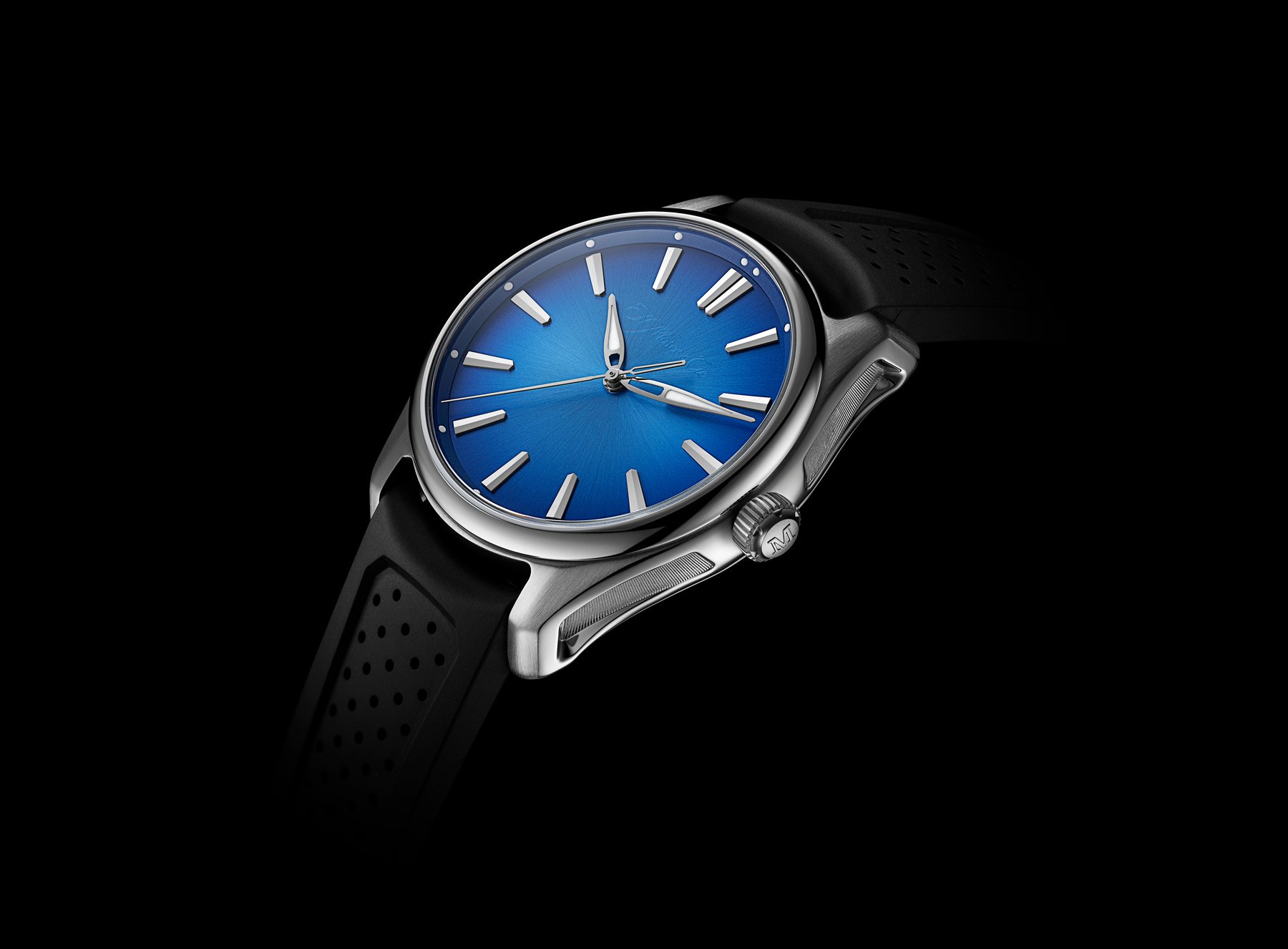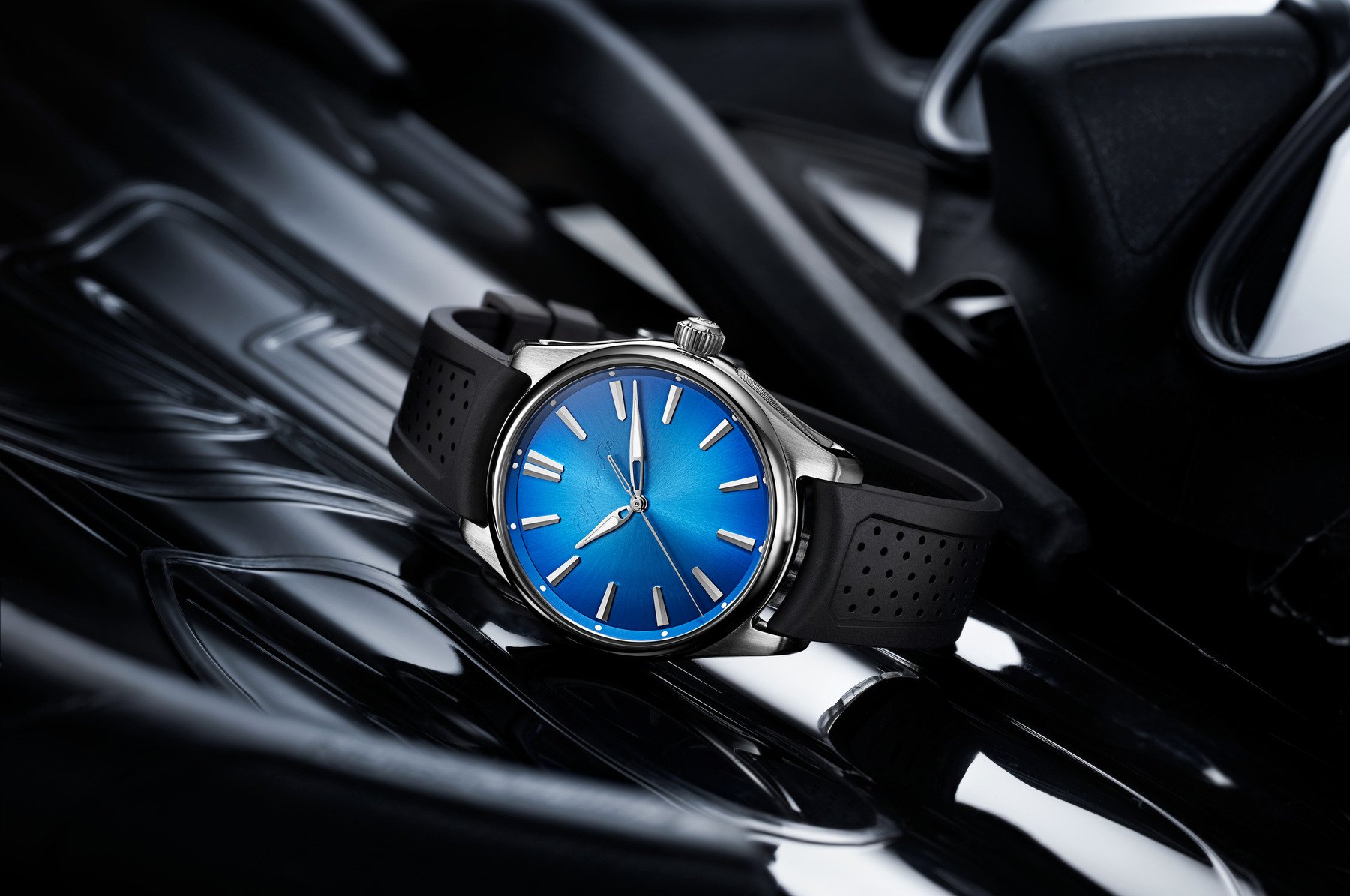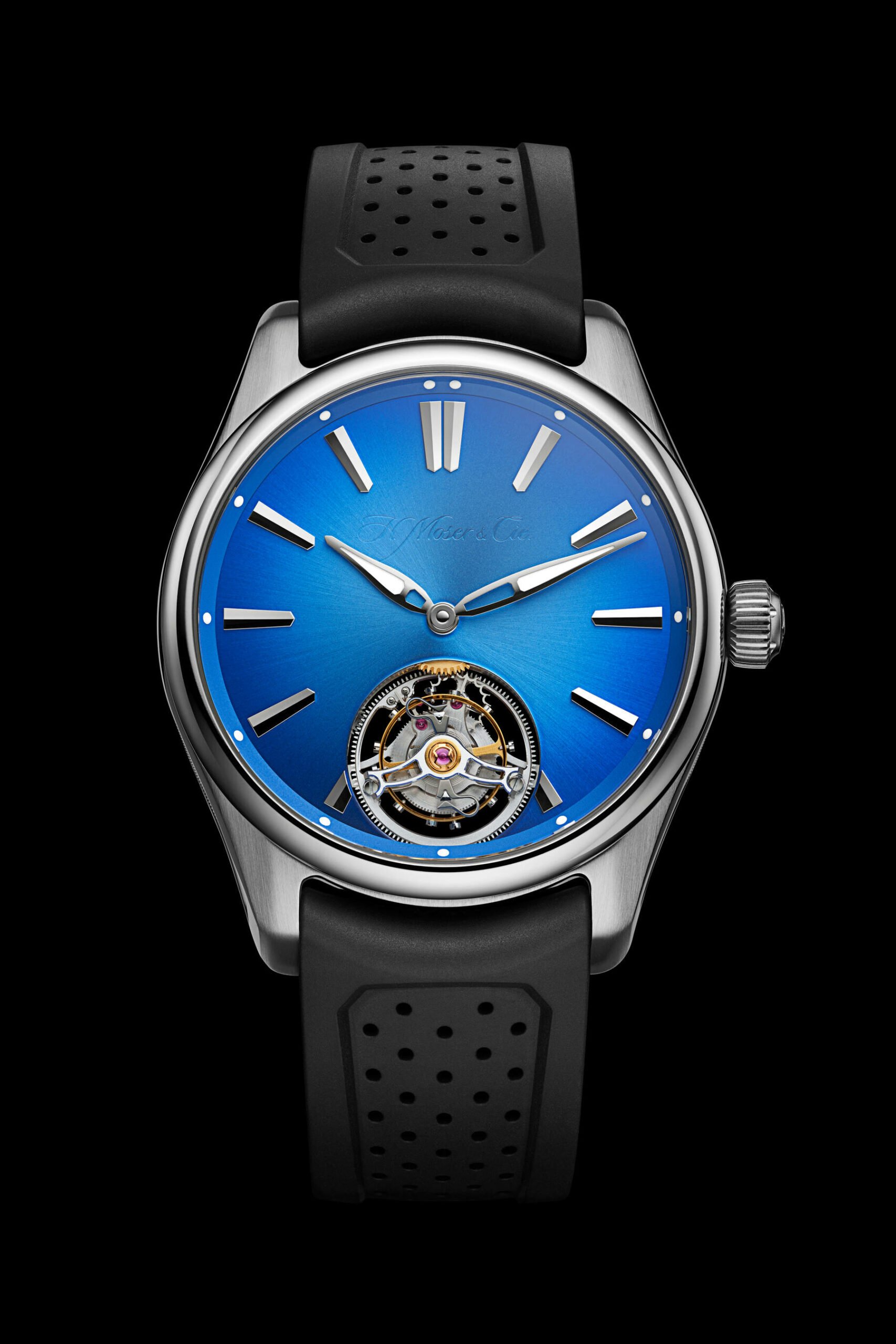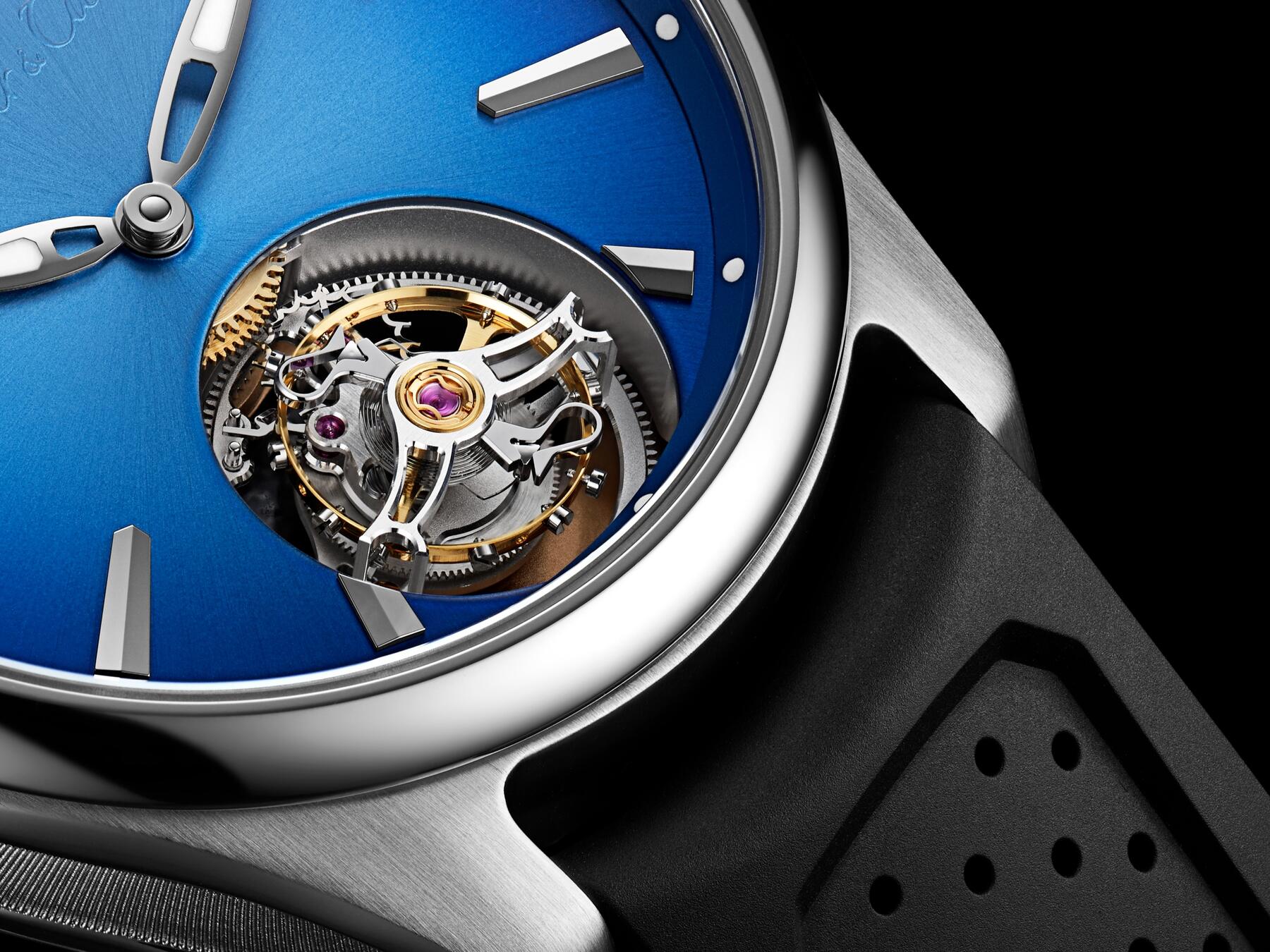H. Moser Turns Up The Chill Factor With The Pioneer Arctic Blue In A New 40mm Case
The most accessible watches from H. Moser & Cie. are those in the Pioneer series, and without seeing any sales figures, I can say it’s a success. Throughout the Moser lineup, Eduoard Meylan and his design department have set industry standards for fumé dials while also giving us a future-proof vision of the integrated bracelet with the Streamliner. The watch is inspired by sleek, aerodynamic 1920s designs from Raymond Loewy and his peers but still looks to the future. So where does the new Pioneer Arctic Blue fit in?
As a regular sports watch with a 120m depth rating, a smooth steel case, and a vented rubber strap, it has many competitors. But with H. Moser’s eye for detail and dial art, the result is far from the normal fare of sports watches. The tempting combination of a tough case design with jaw-dropping dial details never gets old, but what about the 42.8mm case? The dials of the Pioneer series are stars in their own right, and the case is equally strong in its execution. Both the case and dial craftsmanship deserve a decent space to shine, but the former’s nearly 43mm diameter feels big. That’s why I’m excited by these two new models today. For the first time, the Pioneer series comes with a 40mm case.
First impressions of the Pioneer Centre Seconds Arctic Blue
Even with the not-insignificant 5.5mm height of the HMC 200 movement, the Centre Seconds is rather slim at 10.4mm and 12mm including the slightly domed crystal. And unlike the irrelevant 1mm changes that rock Rolex fans, a 2.8mm reduction in diameter is a big change. There is no mention of the lug-to-lug length, but the case looks comfortably short. My favorite view is an angled side profile, which reveals the compound curves of the sides and the fine machined pattern of the deep-set surface inside the scallops. There is a choice of straps, including fabric, leather, and a bracelet, but the rubber makes for great contrast. The fluid lines of the case with its recognizable sides are soft, balanced, and well-matched by the crown. It’s M-logoed, rounded, and almost pilot-like in size, making it easy to use while underlining the Pioneer’s sports aesthetic. But as with any H. Moser & Cie. reference, the dial has a starring role in the play.
Welcome to the school of fumé
I’ve yet to see an H. Moser with a matte black dial (thank goodness), and the sunburst fumé finish is discreet in its transition. The fresh blue center segues close to navy blue under the sword-faceted indices. This is accentuated by a dark blue rehaut with lume plots outside of each index. The broad, angular shape of the single indices and double marker at 12 is contrasted by swoopy hands with deep-set lume and a needle seconds hand that bears a literal resemblance to a sewing needle. To me, the variation in shapes speaks to the rich design language of Moser in a balanced blend of eye-catching detail and legibility. The soft shape of the hour and minute hands have a symbiotic relationship with the rounded case, while the bold indices and sharp needle seconds hand make the sporty intent of this watch crystal clear.
When tourbillon splendor represents good value
Have you spotted the ghostly logo? Look again, and you’ll see the sweeping font of the “H. Moser & Cie.” script in clear lacquer print on the dial. Despite the lack of in-your-face branding, the 40mm Pioneer is pure H. Moser. Even viewed against the alien cool of the Streamliner or mad MB&F collabs, there is a cohesive language of cool. Now, US$54,900 is not great value for a time-only sports watch. But what if you add a tourbillon to the mix? If memory serves me right, that’s a rather good price. The 40mm Pioneer Tourbillon Arctic Blue is as jaw-dropping as any rich-dialed Moser can be, but with the added flex power of a flying tourbillon. It also retains the 10.4mm case thickness and the three-day power reserve of the Centre Seconds.
A modular and accurate conclusion
Sister company Precision Engineering’s HMC 804 provides the heart of this reference, and the tourbillon has a double hairspring. This Moser calling card offers a pair of perfectly matched hairsprings, resulting in greater precision. The movement of the point of gravity for each spring when it expands is corrected, significantly improving accuracy and isochronism. An unexpected twist is that the tourbillon is produced as an interchangeable module. It is actually assembled and regulated independently of the movement, and a simple plug-and-play system allows for easy servicing. For me, this adaptation of the tourbillon, the poster child for Haute Horlogerie, is a fitting conclusion and further fumé-dialed evidence of the future-proofing of Edouard Meylan and his team. The new Pioneer Centre Seconds Arctic Blue is available from H. Moser & Cie. for US$14,200, and the Pioneer Tourbillon Arctic Blue is a tourbillon bargain at US$54,900.
Will the new Pioneer Arctic Blue make you start saving up for your first tourbillon, Fratelli? Let me know in the comments. I do actually think this represents a value proposition. Now, will you help me pitch it to my wife?
Find me and follow me: @thorsvaboe




